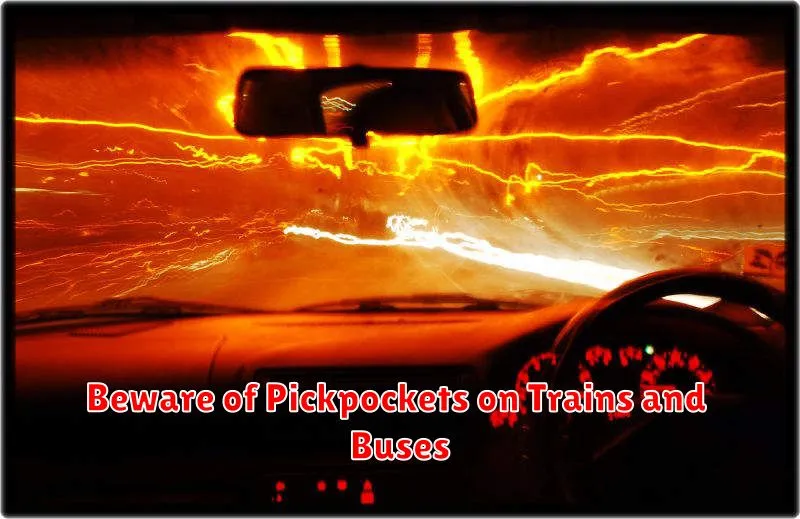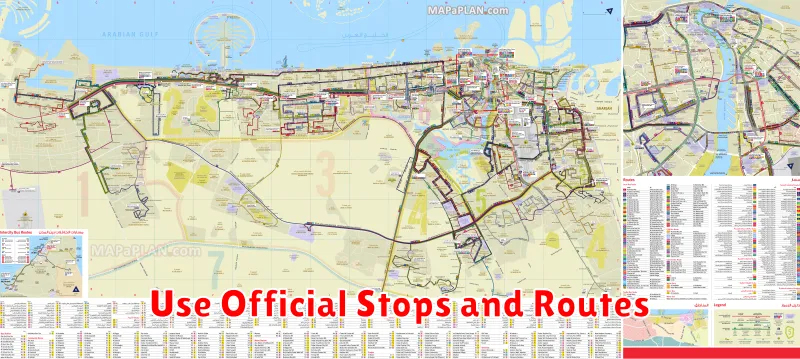Navigating unfamiliar territory in a foreign city can be an exciting adventure, but it also presents unique challenges, particularly when using public transport. Understanding and mitigating the risks associated with public transport in foreign cities is essential for a safe and enjoyable trip. From petty theft and scams to navigating complex routes and language barriers, being prepared can significantly enhance your experience. This article offers practical advice and insights to help you confidently and safely utilize public transportation in foreign cities, ensuring a smoother, more secure journey. We will address common public transport risks, offering strategies to avoid becoming a victim of crime while providing guidance on handling potentially stressful situations.
Whether you’re a seasoned traveler or embarking on your first international trip, understanding the potential risks of public transport in a foreign city is paramount. This article provides comprehensive guidance to minimize your exposure to common threats, such as pickpocketing, scams, and navigating unfamiliar routes. By learning how to recognize and avoid these risks, you can confidently explore your destination while enjoying the convenience and affordability of public transportation. We will equip you with the knowledge and strategies to protect yourself, empowering you to travel smartly and safely, ensuring peace of mind throughout your journey in any foreign city.
Public Transit Safety by Country
Public transit safety varies significantly from country to country. Factors influencing safety include infrastructure quality, crime rates, local laws and enforcement, and cultural norms. Researching your destination before traveling is crucial. Resources like government travel advisories and city-specific websites often offer valuable safety information related to public transport.
In some countries, pickpocketing and petty theft are more prevalent on crowded buses or trains. Other countries may have safety concerns related to the condition of vehicles or infrastructure. Being aware of the specific risks associated with your destination will allow you to take appropriate precautions.
While general safety tips apply universally, considering the local context is important. For instance, in some cultures, certain behaviors might be interpreted as provocative and increase your risk. Understanding local customs related to dress, interaction, and personal space can contribute significantly to your safety while using public transit.
Travel During Busy and Bright Hours
One of the most effective strategies for mitigating risks on public transport in unfamiliar cities is to travel during busy and bright hours. Daytime travel, especially during peak commuting times, often means increased police presence and a higher volume of fellow passengers. This creates a safer environment as opportunistic criminals are less likely to target individuals in crowded, well-lit spaces.
Traveling when it’s light out also improves your situational awareness. You can more easily identify potential hazards, navigate unfamiliar routes, and locate assistance if needed. Avoid traveling late at night or very early in the morning when streets are less populated and visibility is reduced.
While traveling during peak hours might mean contending with larger crowds, the added security significantly outweighs the slight inconvenience. Planning your journeys for these times can greatly reduce your vulnerability to theft, harassment, or other undesirable incidents.
Beware of Pickpockets on Trains and Buses

Public transportation, while convenient, can be a prime location for pickpocketing. Crowded trains and buses provide ample opportunity for thieves to operate unnoticed. Be particularly vigilant during rush hour and in areas with high tourist traffic.
Secure your belongings. Keep valuables like wallets, phones, and passports in a secure, inner pocket or a bag with a zipper. Avoid placing them in easily accessible outer pockets or backpacks.
Maintain awareness of your surroundings. Be observant of individuals who seem overly interested in your belongings or who are jostling you unnecessarily. If you feel someone is too close, politely move away.
Be cautious when boarding and exiting. These are moments of distraction when pickpockets can easily target unsuspecting travelers. Keep a firm grip on your belongings and be aware of those around you.
If you are traveling with a backpack, consider wearing it on your front, especially in crowded areas. This makes it more difficult for thieves to access its contents without your notice.
Use Official Stops and Routes

Sticking to official public transportation stops and routes significantly reduces your risk of encountering dangerous situations. Unofficial stops or routes might seem convenient, but they often lack the security measures and regulations of designated areas. These unregulated areas can be poorly lit, isolated, and potentially attract criminal activity.
Always wait for buses, trams, or other public transport at designated stops. Look for clear signage indicating the official stop and route information. Be wary of individuals offering rides or suggesting alternative routes, especially if they are not affiliated with a recognized transportation service. Confirm route information using official apps or websites provided by the local transit authority.
Inside the vehicle, be aware of your surroundings. If something feels unsafe or suspicious, alert the driver or other transit authority personnel if available.
Don’t Flash Valuables or Devices
Minimize the visibility of expensive jewelry, watches, and other valuable items. Thieves often target individuals who appear affluent. Keep these items concealed under your clothing or leave them at your accommodation if possible. This reduces the risk of becoming a target for opportunistic criminals.
Be discreet when using electronic devices like smartphones, tablets, and cameras, especially in crowded areas or during off-peak hours. Avoid openly displaying or using expensive gadgets. If you need to use your phone, find a less conspicuous location and be aware of your surroundings. Consider using less expensive devices while traveling, if feasible.
Store your valuables securely in a bag that you keep close to you at all times. A cross-body bag or a backpack worn on your front is a safer option than a handbag or a backpack worn on your back. Keep your bag zipped or fastened and maintain physical contact with it to deter pickpockets.
Know Emergency Numbers and Exits
When navigating unfamiliar public transport systems, prioritize safety by identifying emergency numbers and exits. Emergency contact information should be readily accessible. Research local emergency numbers beforehand and save them in your phone. Don’t rely solely on internet access, as connectivity can be unreliable. Consider writing down key numbers as a backup.
Locate emergency exits on trains, buses, and in stations. Familiarize yourself with their positions upon entering. In crowded situations, knowing where to go quickly can be crucial. Observe the general layout of stations and platforms to understand escape routes.
Consider carrying a personal safety alarm. These devices can deter potential threats and attract attention if assistance is needed.
Trust Your Instincts on Crowded Routes
Navigating public transport in unfamiliar cities presents unique safety challenges. Crowded buses and trains, especially during rush hour, can be breeding grounds for petty theft. Trust your gut feeling. If a situation or individual makes you uncomfortable, remove yourself. Don’t hesitate to move to a different part of the train or bus, or even exit at the next stop if necessary.
Be extra vigilant about your belongings in crowded spaces. Keep bags zipped and close to your body, preferably in front of you. Avoid using outside pockets or easily accessible compartments. A simple bump or jostle can be a distraction technique used by pickpockets. If you’re carrying a backpack, consider holding it in your arms or placing it on your chest.
Stay aware of your surroundings. Avoid becoming engrossed in your phone or other distractions, as this can make you an easy target. Maintain eye contact with those around you, projecting an air of confidence and alertness. This can often deter potential thieves.

